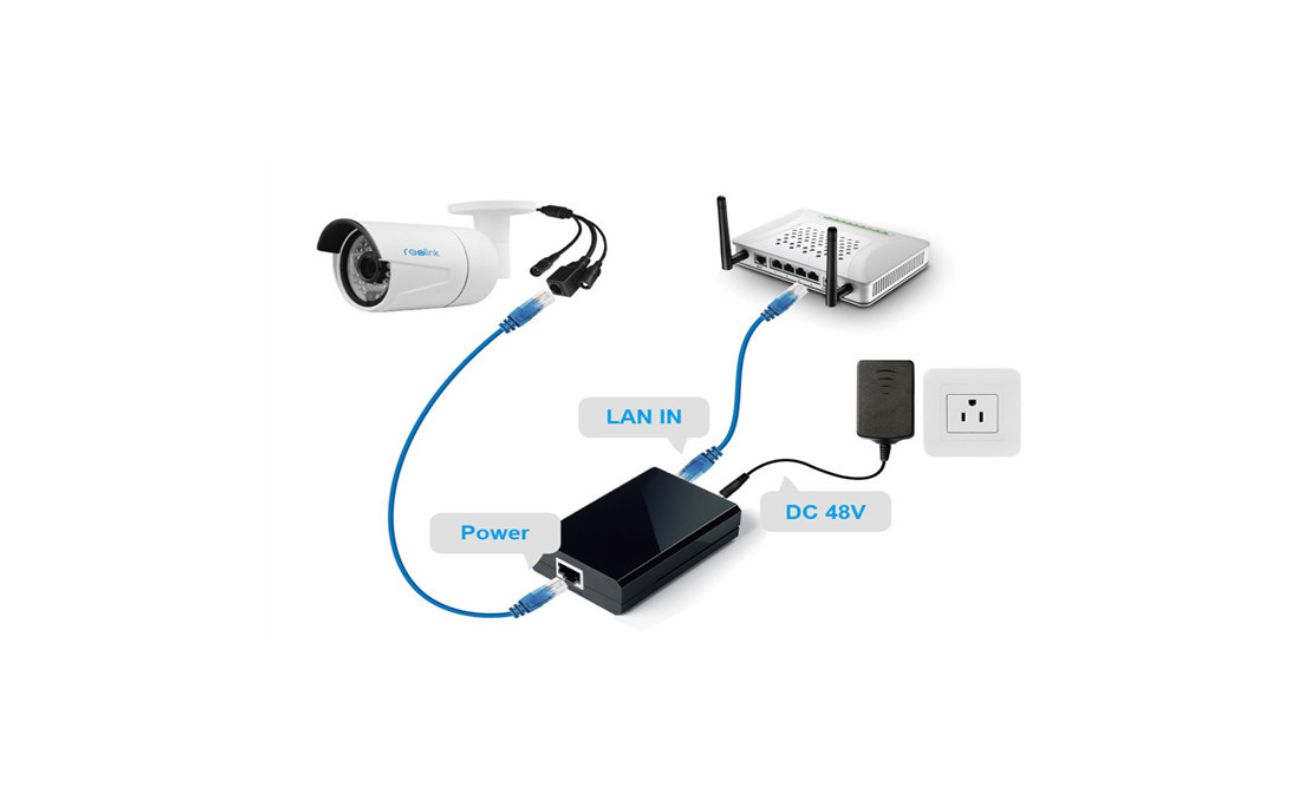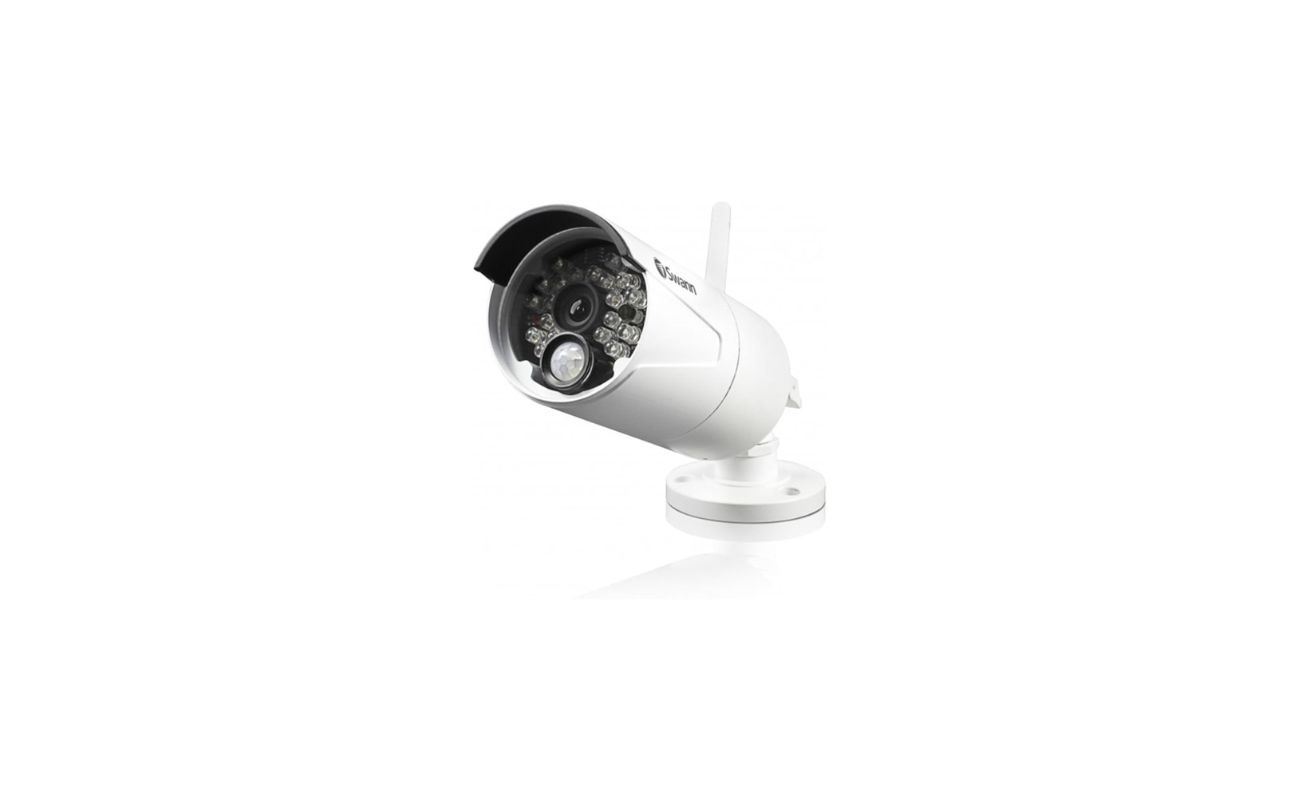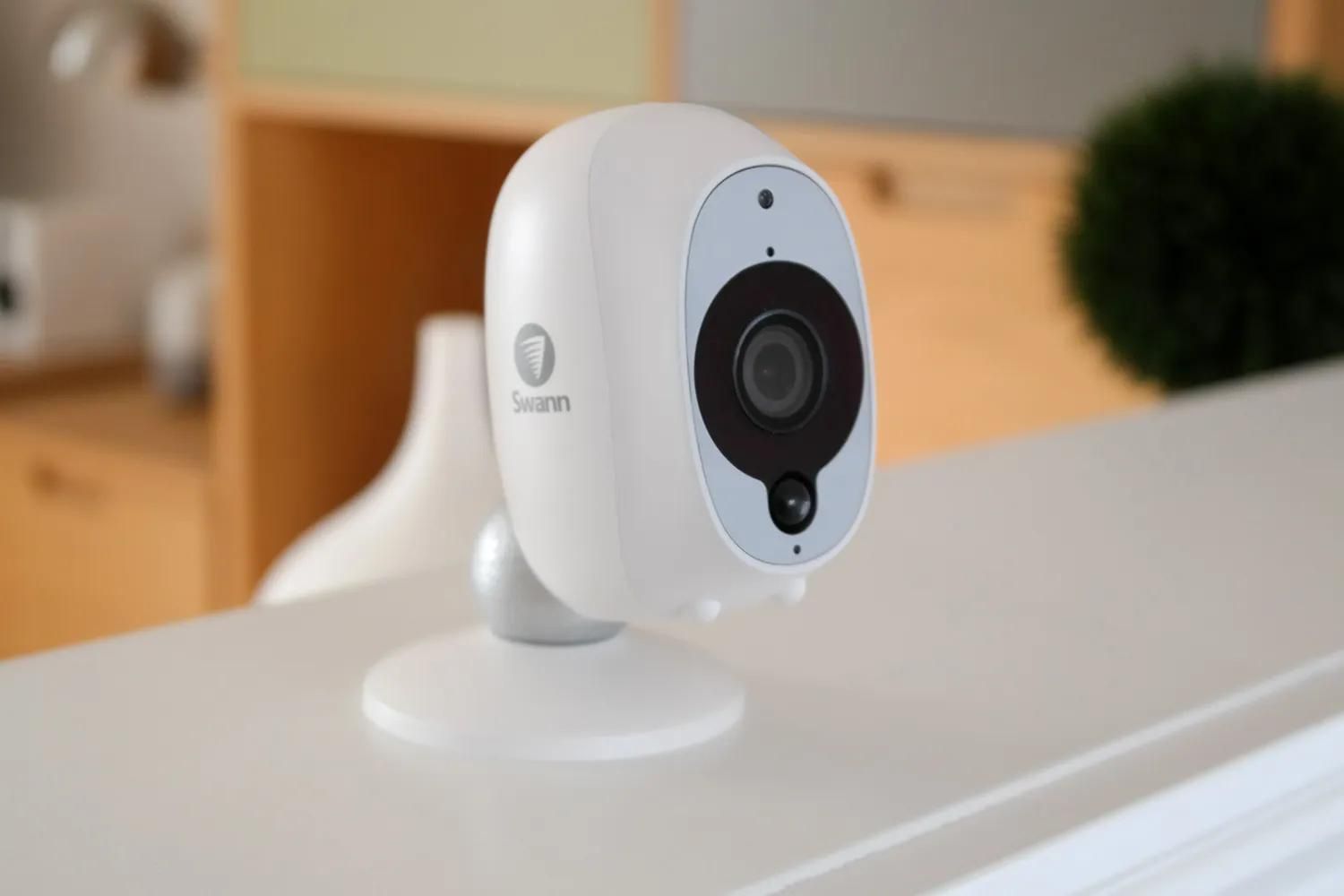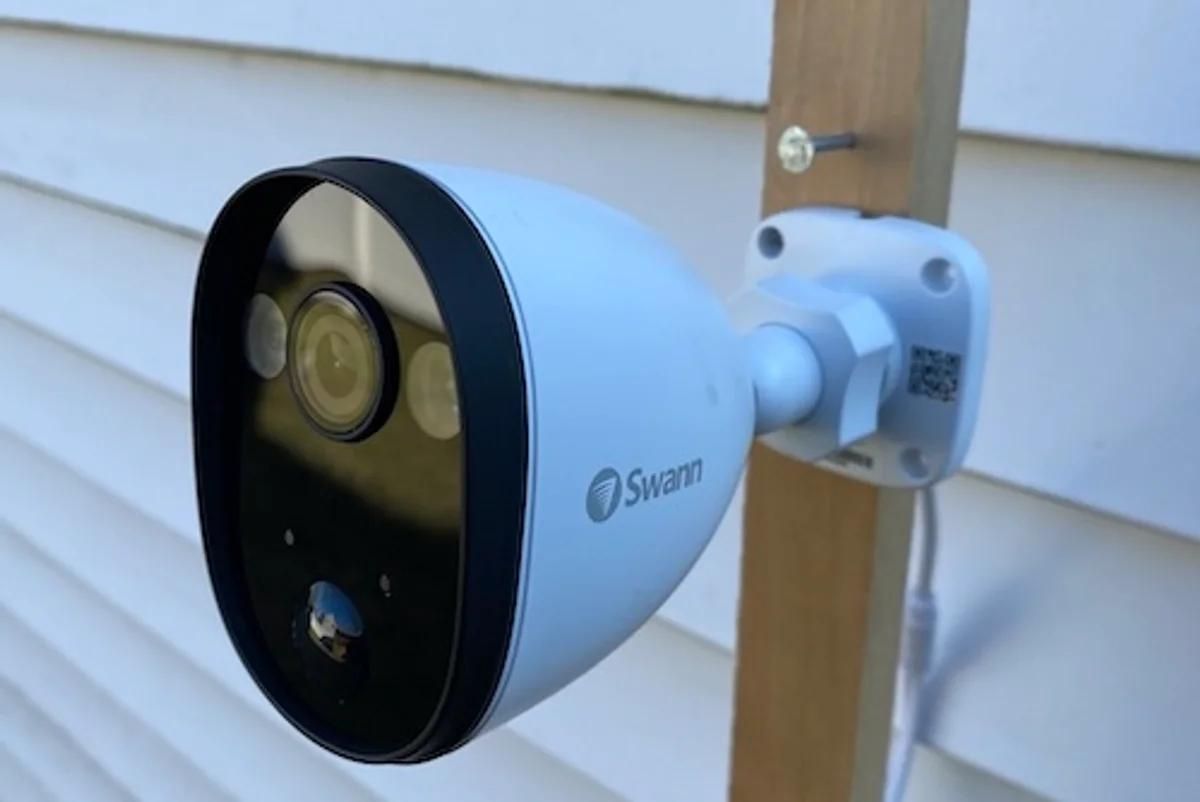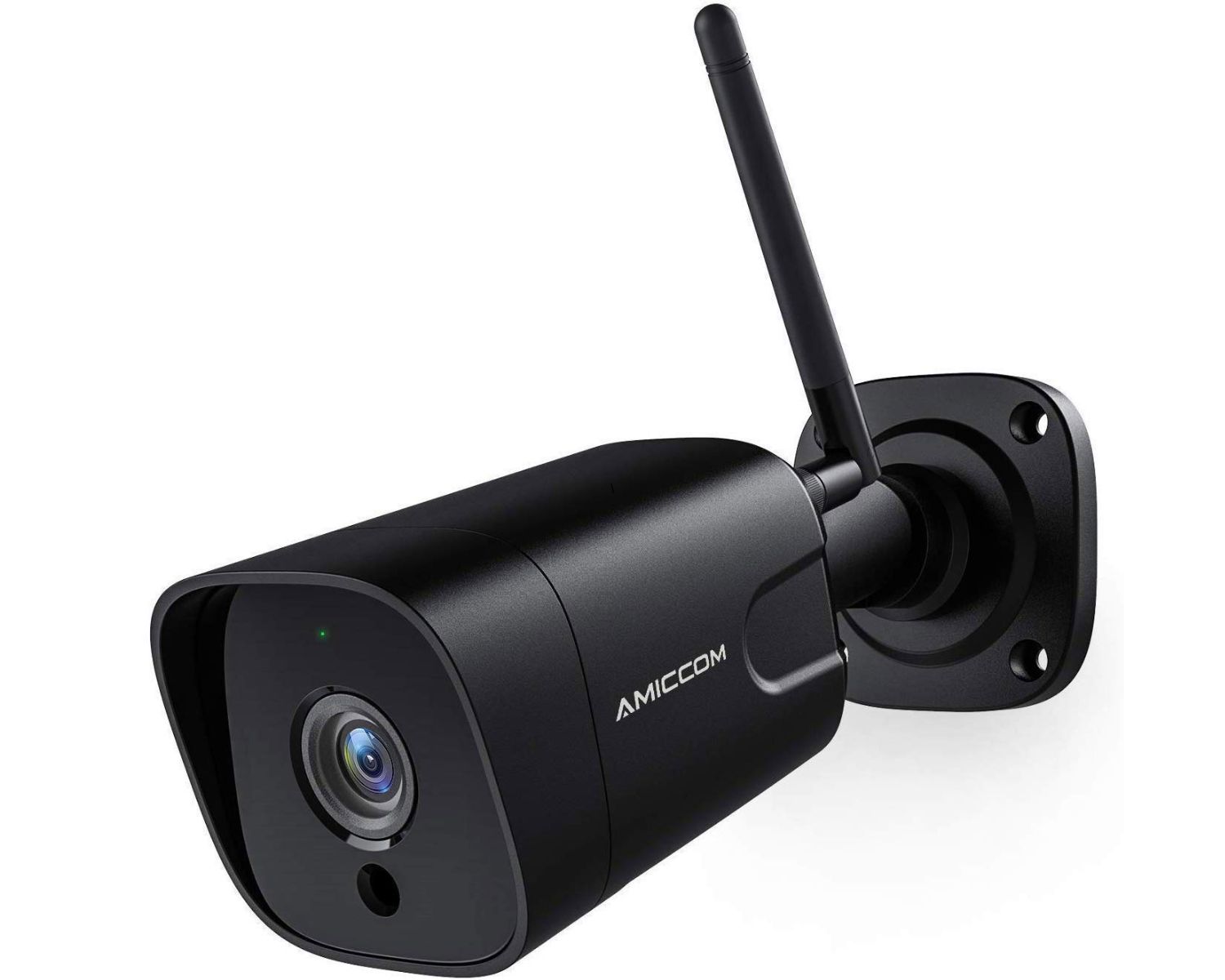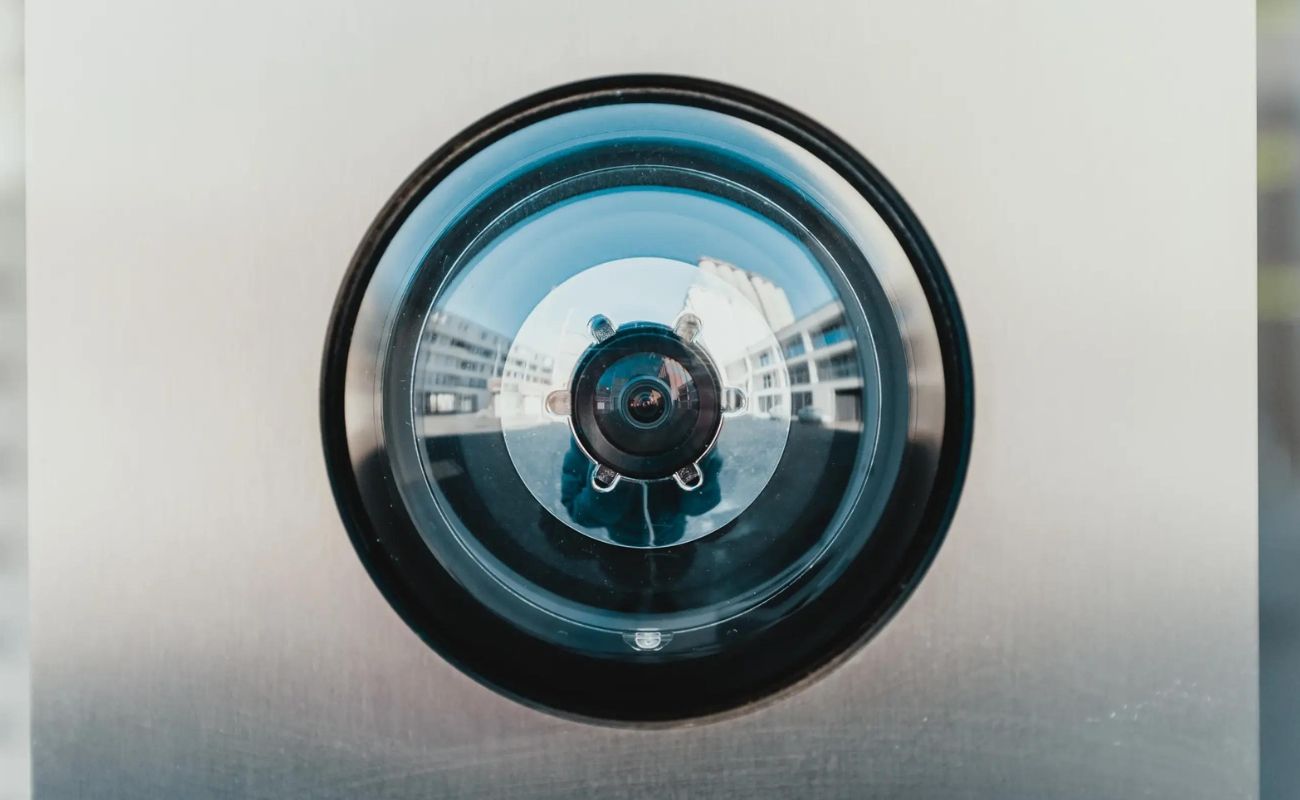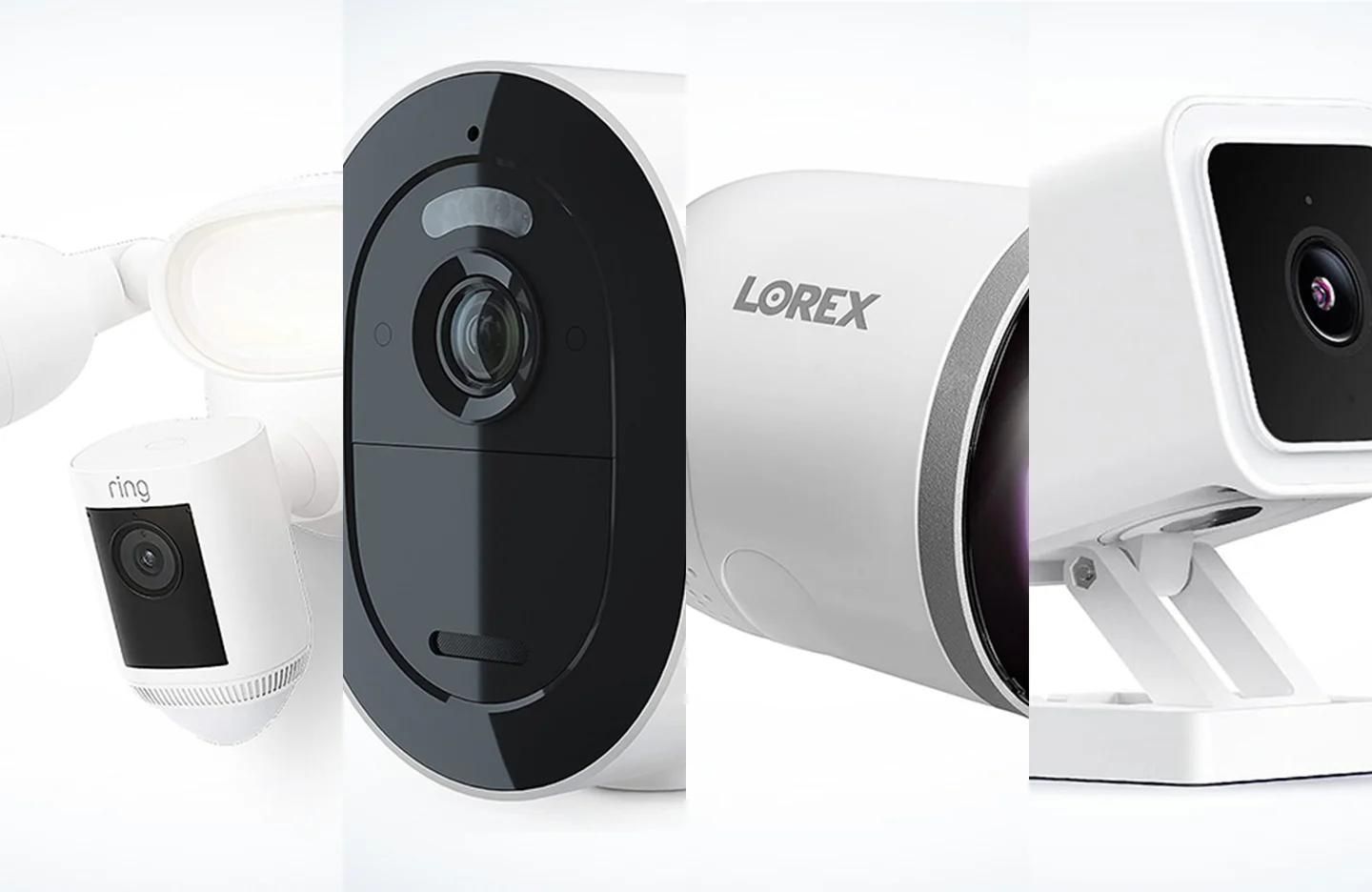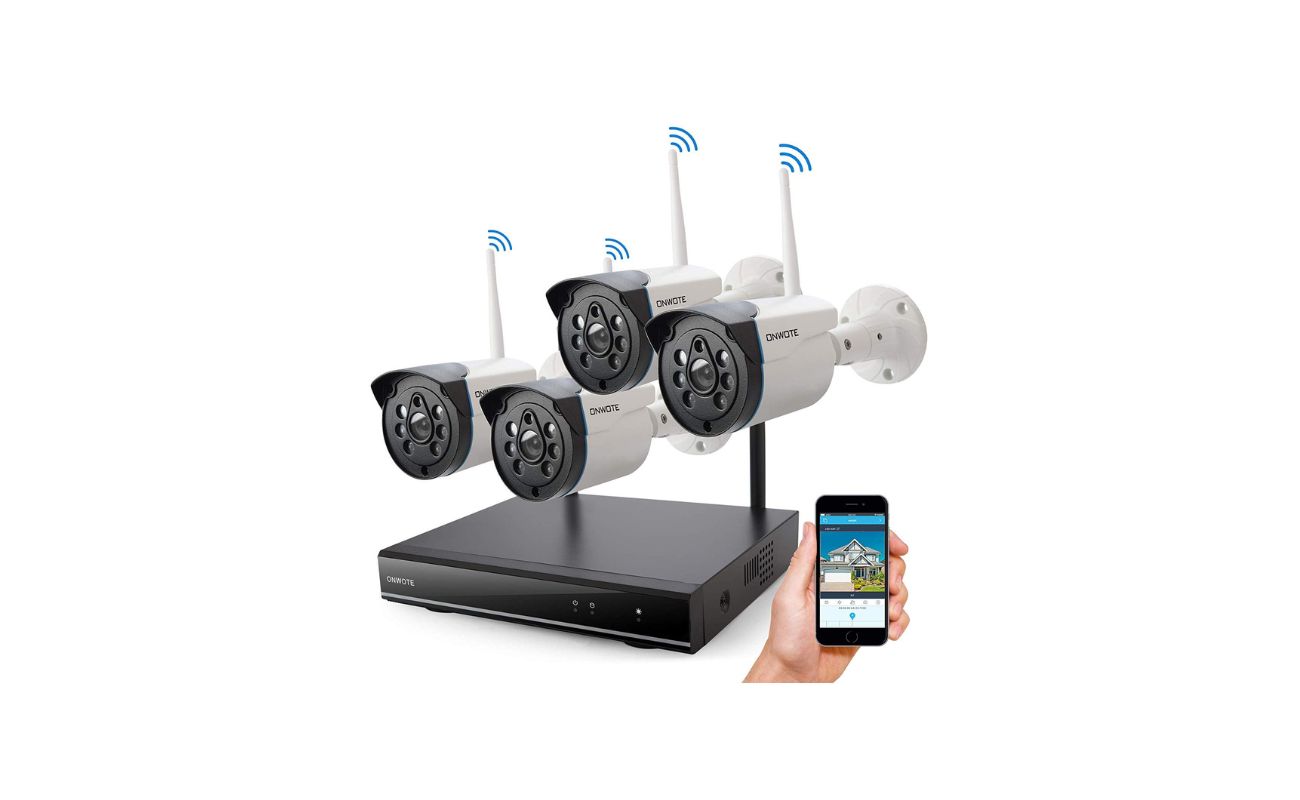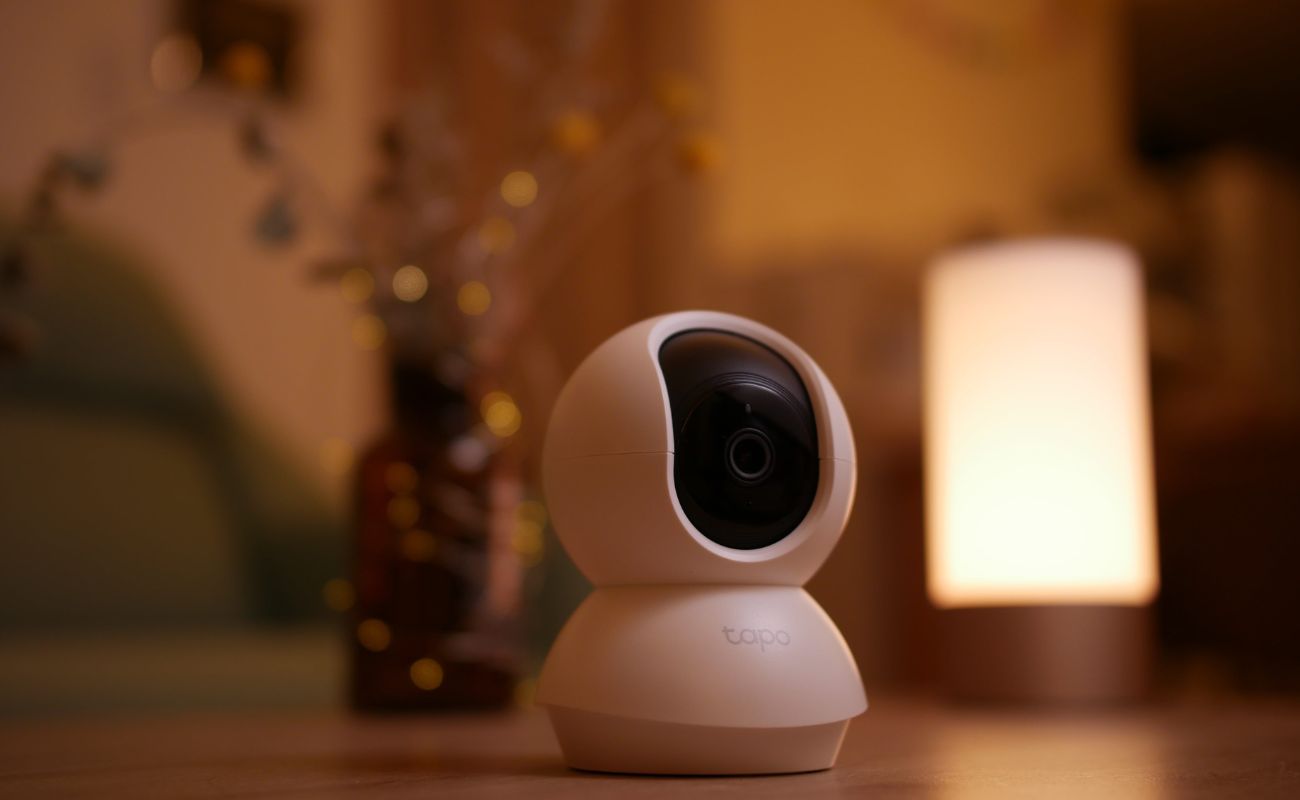Home>Home Security and Surveillance>What Size Memory Card Can A Swann Wireless Security Camera Use
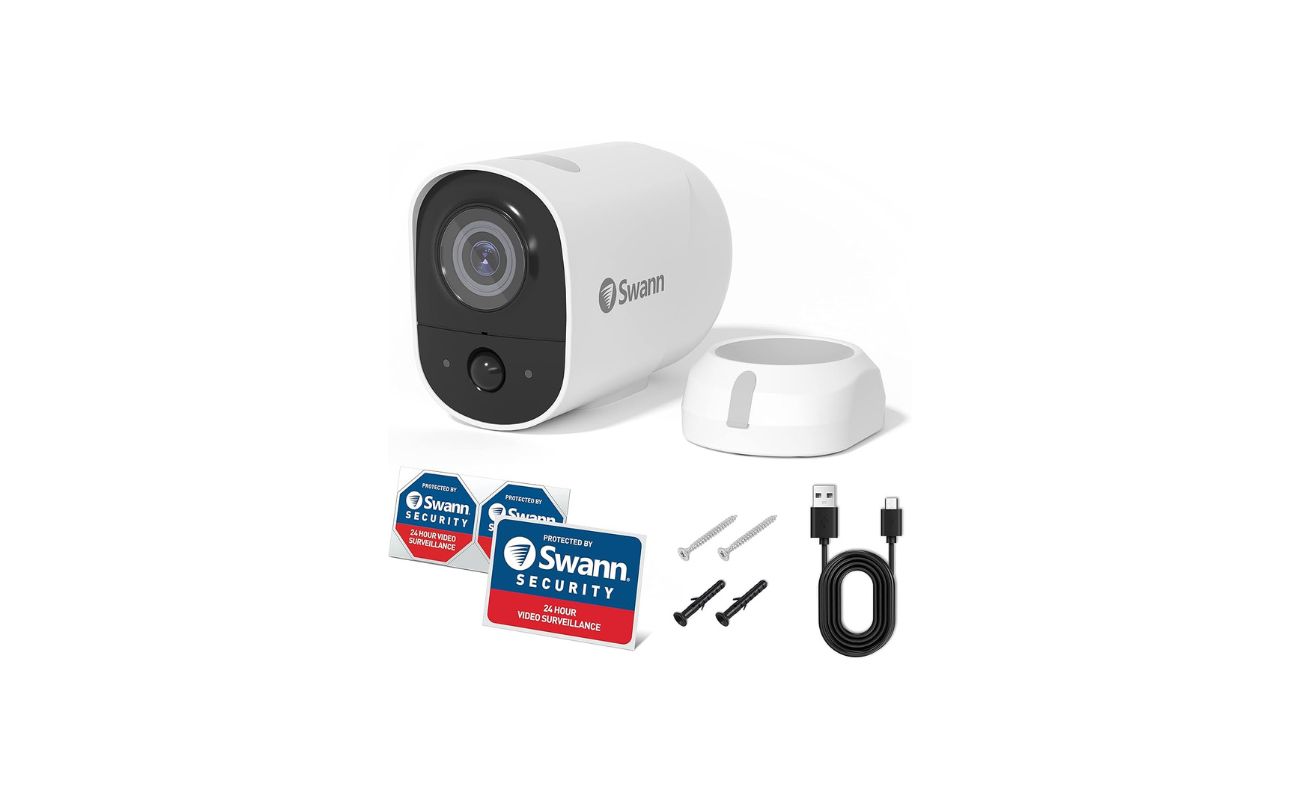

Home Security and Surveillance
What Size Memory Card Can A Swann Wireless Security Camera Use
Modified: October 20, 2024
Find out the perfect memory card size for your Swann wireless security camera. Ensure optimal storage capacity for your home security and surveillance needs.
(Many of the links in this article redirect to a specific reviewed product. Your purchase of these products through affiliate links helps to generate commission for Storables.com, at no extra cost. Learn more)
Introduction
In today’s ever-evolving world, home security has become a top priority for homeowners around the globe. With advancements in technology, wireless security cameras have gained popularity as a convenient and effective way to protect our homes. One crucial component of these cameras is the memory card, which plays a vital role in storing recorded footage for later viewing.
Choosing the right memory card for your Swann wireless security camera is essential to ensure optimal performance and storage capacity. But with a plethora of options available in the market, it can be overwhelming to know which size memory card is compatible with your camera.
In this article, we will explore the factors to consider when selecting a memory card for your Swann wireless security camera, discover the compatible memory card sizes, learn how to insert and format the memory card, and gain useful tips for maximizing storage space. By the end of this article, you will have a clear understanding of the memory card requirements for your Swann wireless security camera, enabling you to make an informed decision.
So, let’s dive in and explore the fascinating world of memory cards for Swann wireless security cameras.
Key Takeaways:
- Choose a memory card for your Swann wireless security camera based on camera compatibility, storage capacity, and video resolution to ensure seamless recording and playback of surveillance footage.
- Maximize memory card storage by adjusting video quality settings, enabling motion detection, setting recording schedules, regularly reviewing and deleting unnecessary footage, considering high-capacity memory cards, and keeping backups of important footage.
Read more: What Size SD Card For A Security Camera
Factors to Consider
When choosing a memory card for your Swann wireless security camera, there are a few important factors to consider. These factors will help ensure compatibility, optimal performance, and sufficient storage capacity for your camera’s needs. Let’s explore them in detail:
1. Camera Compatibility: The first factor to consider is whether the memory card is compatible with your specific Swann wireless security camera model. Swann typically provides a list of compatible memory cards in the camera’s user manual or on their website. Ensure that the memory card you choose matches the recommended specifications for your camera.
2. Storage Capacity: Memory cards come in a wide range of storage capacities, ranging from a few gigabytes (GB) to several terabytes (TB). It’s crucial to determine the amount of storage space you require based on your surveillance needs. Consider factors such as the duration of recording, video quality, and the number of cameras connected to the system.
3. Video Resolution and Bitrate: The video resolution and bitrate of your Swann wireless security camera can impact the amount of storage space required. Higher resolutions and bitrates consume more storage capacity per minute of recorded footage. Ensure that the memory card you choose can handle the recording demands of your camera’s specifications.
4. Write Speed: The write speed of a memory card determines how quickly it can store the recorded footage. A higher write speed is crucial, especially if your camera records high-definition footage or multiple cameras simultaneously. Look for memory cards with faster write speeds to ensure seamless recording and prevent the risk of dropped frames or lost footage.
5. Durability and Reliability: Opt for memory cards that are durable and reliable, capable of withstanding environmental factors such as temperature extremes, moisture, and physical shocks. Look for memory cards with built-in protection against shock, water, and temperature fluctuations to ensure the longevity of your camera’s recorded footage.
6. Brand Reputation: Choose memory cards from reputable brands known for their quality and reliability. Stick to well-known brands that have a good track record in the industry. They are more likely to provide better warranty coverage and technical support if any issues arise.
Considering these factors will help you choose the most suitable memory card for your Swann wireless security camera. It is essential to strike a balance between storage capacity, speed, durability, and compatibility to ensure a seamless and reliable surveillance experience. Now that we have explored the factors to consider let’s move on to the memory card compatibility for Swann wireless security cameras.
Swann Wireless Security Camera Memory Card Compatibility
To ensure optimal performance and compatibility, it is crucial to select a memory card that is specifically designed for Swann wireless security cameras. Swann provides recommended memory card specifications for each of their camera models. Here are some common memory card compatibility factors to consider:
1. Memory Card Type: Swann wireless security cameras usually support SD (Secure Digital) memory cards. It is important to check the camera’s user manual or the manufacturer’s website to determine the specific type of memory card that is compatible with your camera.
2. Memory Card Capacity: Swann cameras typically support a range of memory card capacities. It is important to check the maximum supported capacity for your camera model. The capacity of a memory card is usually measured in gigabytes (GB) or terabytes (TB). Common memory card capacities range from 16GB to 256GB or even higher for more advanced models.
3. Speed Class Rating: The speed class rating of a memory card indicates its minimum sustained write speed. Swann cameras often require memory cards with a minimum speed class rating of Class 10 or UHS-1 (Ultra High Speed). This ensures smooth and uninterrupted recording, especially when capturing high-definition video footage or multiple camera feeds.
4. Video Format Compatibility: Swann cameras typically record video footage in standard video formats such as MP4, H.264, or H.265. Ensure that the memory card you choose is compatible with these formats to ensure proper recording and playback of the footage.
5. Firmware Updates: Occasionally, Swann may release firmware updates for their cameras that support higher memory capacities or new memory card technologies. It is recommended to keep your camera’s firmware up to date to ensure compatibility with newer memory card models and maximize performance.
When selecting a memory card for your Swann wireless security camera, it is always advisable to refer to the manufacturer’s specifications and guidelines. This will ensure that you choose a memory card that is fully compatible with your camera model, allowing for seamless recording and playback of your surveillance footage.
Now that we have covered the memory card compatibility factors, let’s move on to exploring the recommended memory card sizes for Swann wireless security cameras.
Recommended Memory Card Sizes
The recommended memory card size for your Swann wireless security camera depends on various factors such as your surveillance needs, video resolution, and storage requirements. Here are some general guidelines to help you determine the appropriate memory card size:
1. Basic Surveillance: If you have basic surveillance needs and your camera records standard-definition video at a lower resolution, a memory card with a capacity of 16GB to 32GB should be sufficient. This can provide ample storage space for several days of continuous recording or longer if motion detection is enabled.
2. High-Definition Video: For cameras that record high-definition (HD) video footage, it is recommended to opt for memory cards with larger capacities. A 64GB to 128GB memory card should be suitable for storing several days to a week’s worth of HD video, depending on your camera’s bitrate and recording settings.
3. Multiple Cameras: If you have a surveillance system with multiple Swann wireless security cameras, the storage requirements will increase accordingly. In such cases, it is advisable to choose memory cards with higher capacities, such as 128GB or 256GB. This will allow for longer storage durations and accommodate the recorded footage from all the cameras in the system.
4. Continuous vs. Motion-Activated Recording: Consider whether your camera records continuously or is set to motion-activated recording. Continuous recording requires larger memory card capacities to store the continuous stream of footage. Motion-activated recording conserves storage space by only capturing video when motion is detected. This can significantly extend the storage duration on smaller capacity memory cards.
It’s important to note that these recommended memory card sizes are approximate and can vary depending on your specific camera model, video quality settings, and recording configurations. Always refer to the manufacturer’s guidelines and consider your individual surveillance needs when choosing a memory card size.
Remember to balance your storage requirements with the practicality of managing and reviewing the footage. Opting for a larger memory card may provide extended storage capacity, but it can also make it more time-consuming to navigate through the recorded footage.
Now that we have explored the recommended memory card sizes, let’s move on to the steps involved in inserting and formatting the memory card for your Swann wireless security camera.
Swann wireless security cameras can typically use memory cards up to 128GB. Make sure to check the specific model’s compatibility before purchasing a memory card.
How to Insert and Format the Memory Card
Inserting and formatting the memory card correctly is crucial for your Swann wireless security camera to recognize and utilize it for recording purposes. Here are the steps to follow:
1. Check the Compatibility: Before inserting the memory card, ensure that it is compatible with your Swann wireless security camera. Refer to the camera’s user manual or the manufacturer’s website for the recommended memory card specifications.
2. Power Off the Camera: It is important to power off your camera before inserting or removing the memory card. This will prevent any potential data corruption or damage to the memory card.
3. Locate the Memory Card Slot: Find the memory card slot on your Swann wireless security camera. The location may vary depending on the camera model. In most cases, the memory card slot is located on the side or at the back of the camera.
4. Insert the Memory Card: Open the memory card slot cover and carefully insert the memory card into the designated slot. Ensure that the card is inserted in the correct direction, following the indicated arrow or markings on the card and the camera.
5. Format the Memory Card: Formatting the memory card is an essential step to ensure proper functionality and compatibility with your camera. To format the memory card, navigate to the camera’s settings menu or user interface. Look for the “Format Memory Card” or “Format SD Card” option. Select this option and follow the instructions to initiate the formatting process. Formatting will erase any existing data on the memory card, so ensure that you have backed up any important files before proceeding.
6. Wait for the Formatting Process: After initiating the formatting process, wait for the camera to complete the formatting procedure. This may take a few moments, depending on the size of the memory card.
7. Verify Successful Formatting: Once the formatting process is complete, the camera should display a message indicating successful formatting. You can also check the memory card settings in the camera’s menu to ensure that the card is recognized and the available storage capacity is displayed correctly.
Following these steps will ensure that the memory card is correctly inserted and formatted for your Swann wireless security camera. Properly formatting the memory card is essential to prevent compatibility issues and ensure smooth recording and storage of your surveillance footage.
Now that you know how to insert and format the memory card, let’s explore some useful tips for maximizing memory card storage for your Swann wireless security camera.
Tips for Maximizing Memory Card Storage
Maximizing memory card storage is crucial to ensure that you can capture and store an ample amount of surveillance footage on your Swann wireless security camera. Here are some tips to help you make the most out of your memory card’s storage capacity:
1. Adjust Video Quality Settings: Most Swann cameras offer different video quality settings. If storage space is a concern, consider lowering the video quality or resolution settings. This will reduce the file size of each recording, allowing you to store more footage on the memory card.
2. Enable Motion Detection: Motion detection is a valuable feature that triggers recording only when movement is detected in the camera’s field of view. By enabling motion detection, your camera will only record when necessary, conserving storage space and capturing events of significance.
3. Set Recording Schedules: To further optimize your memory card storage, set up recording schedules based on your needs. If you know specific times when surveillance is critical, schedule the camera to record during those periods. This way, you avoid constantly recording unnecessary footage and save storage space.
4. Regularly Review and Delete Unnecessary Footage: Periodically review the recorded footage stored on the memory card. Delete any unnecessary or irrelevant footage that no longer serves a purpose. This frees up space for new recordings and ensures that your memory card is not filled with redundant data.
5. Invest in High-Capacity Memory Cards: Consider upgrading to a higher-capacity memory card if you find that your storage needs exceed the current card’s capacity. Swapping out for a larger memory card allows for longer recording durations without the need for frequent purging or transfer of footage.
6. Check for Firmware Updates: Swann may release firmware updates for their cameras that optimize memory card usage. Regularly check for firmware updates and install them to ensure compatibility with newer memory card models and to take advantage of any storage-related improvements.
7. Keep a Backup of Important Footage: It’s always a good practice to keep a backup copy of essential footage stored on the memory card. This can be done by periodically transferring the recorded footage to an external storage device such as a computer or a dedicated network storage (NAS) system. By doing so, you can free up space on the memory card while ensuring your important footage is safely stored.
By implementing these tips, you can make the most out of your memory card storage capacity, ensuring that your Swann wireless security camera captures and stores crucial surveillance footage efficiently.
Now, let’s conclude our article on memory card compatibility and storage for Swann wireless security cameras.
Conclusion
Selecting the right memory card for your Swann wireless security camera is crucial to ensure optimal performance and storage capacity. By considering factors such as camera compatibility, storage capacity, video resolution, write speed, durability, and brand reputation, you can make an informed decision when choosing a memory card.
It is recommended to refer to the manufacturer’s guidelines and specifications to ensure that you select a memory card that is compatible with your specific Swann camera model. This will ensure seamless recording and playback of your surveillance footage.
Based on your surveillance needs, it is advisable to choose a memory card size that accommodates the duration and quality of the footage you intend to capture. If you have multiple cameras or require higher-resolution recordings, opt for memory cards with larger capacities.
Once you have selected and obtained a compatible memory card, correctly insert and format it according to the camera’s instructions. This ensures that the memory card is recognized and ready for recording.
To maximize your memory card storage, adjust video quality settings, enable motion detection, set recording schedules, regularly review and delete unnecessary footage, consider high-capacity memory cards, and keep backups of important footage.
Remember to stay vigilant and update your camera’s firmware regularly to ensure compatibility with newer memory card models and to take advantage of storage-related improvements.
By following these guidelines and tips, you can make the most of your Swann wireless security camera’s memory card, ensuring efficient storage and seamless surveillance.
In conclusion, choosing the right memory card and implementing strategies to maximize storage can greatly enhance the functionality of your Swann wireless security camera system, providing you with the peace of mind and the level of protection you desire for your home or property.
Stay informed, be proactive, and enjoy the benefits of a reliable and efficient memory card storage solution for your Swann wireless security camera!
Now that you're equipped with knowledge about the right memory card for your Swann wireless security camera, why not delve deeper into how to utilize a 64 GB memory card efficiently? Our next read offers comprehensive insights into storing data safely and retrieving it effectively, ensuring you never lose valuable information. Meanwhile, understanding the significance of robust home security systems is vital for ensuring your peace of mind. Discover compelling reasons and smart strategies to protect your domicile in our detailed discussion on the necessity of home security.
Frequently Asked Questions about What Size Memory Card Can A Swann Wireless Security Camera Use
Was this page helpful?
At Storables.com, we guarantee accurate and reliable information. Our content, validated by Expert Board Contributors, is crafted following stringent Editorial Policies. We're committed to providing you with well-researched, expert-backed insights for all your informational needs.

